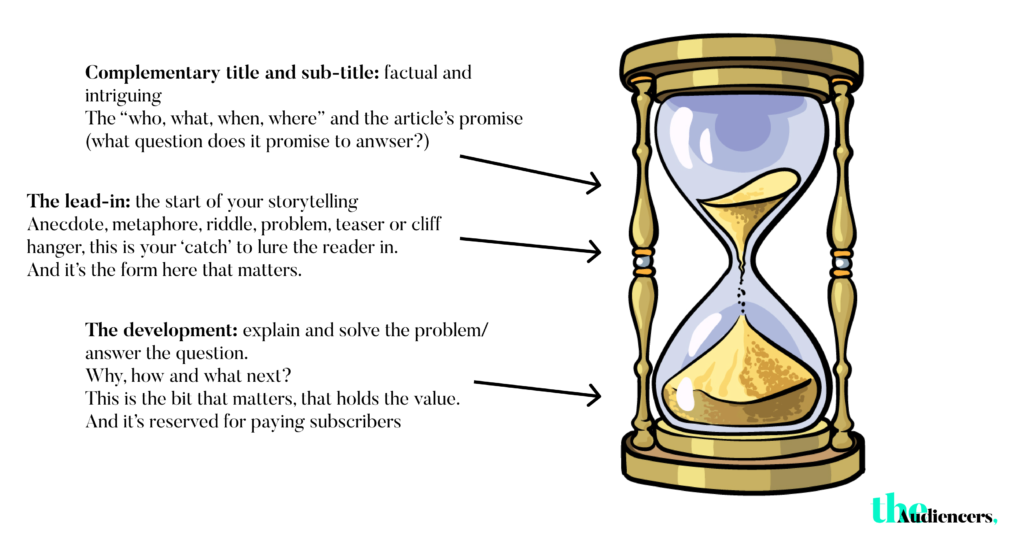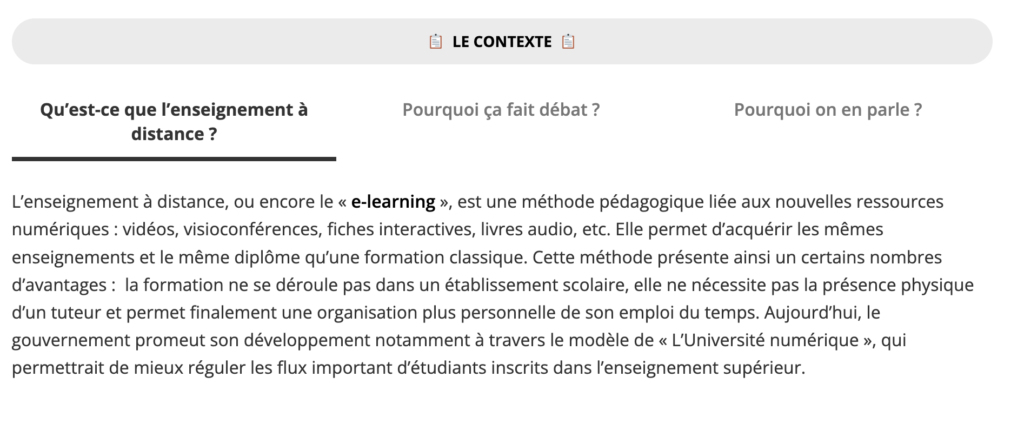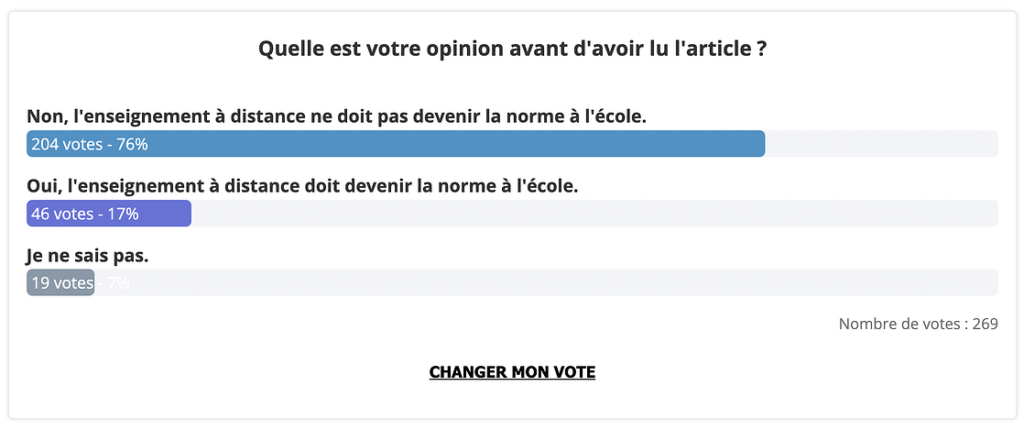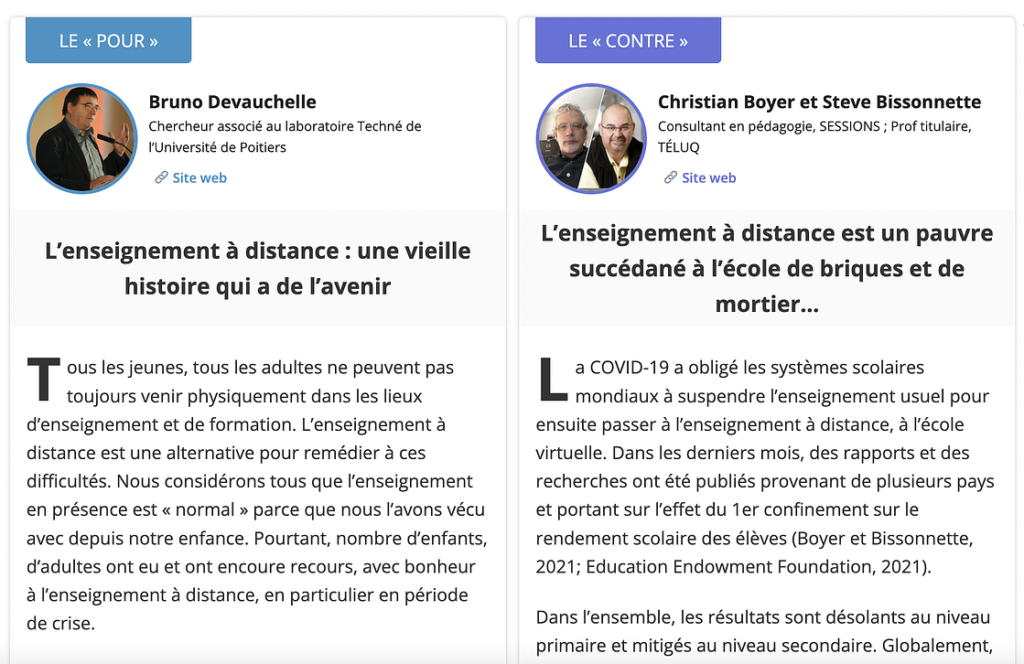

You're reading The Audiencers' newsletter #1, sent out on October 26th, 2022. To receive future newsletters straight to your inbox every two weeks, sign up here.
And there goes the first newsletter!
2 weeks ago, we were finally able to share our project with you – The Audiencers, here to support digital publishers & brand publishers in better engaging, converting & retaining their audiences.
Before jumping into our first newsletter, we just wanted to say thank you. It’s been an amazing journey so far, and we couldn’t have done it without your support!
Now, let’s dive into this Newsletter #1:
- Decisions: How to write for your paywall. The building block of journalism is the inverted pyramid. But, with the development of paywalls & digital subscription models, expert Eric Le Braz shares why this framework needs modernizing & how
- Inspirations: Think benchmarks, use cases, deep dives into successful strategies & even simple screenshots to save you time & bring together the best in the business. This week, an analysis of Le Drenche’s unique engagement strategy to steal
- Overheard this week: Robbie Kellman Baxter, Subscription & Membership Model Expert, shares some advice for successfully launching a subscription strategy
- Recommendations to add to your reading list: from The Audiencers and friends
Decisions
How to write for your paywall – You’ve heard about writing for SEO but what about writing for subscription?
According to Eric Le Braz, journalist, consultant and lecturer, it’s more about an hourglass framework than the classic inverted pyramid.
The inverted pyramid: the framework taught to budding journalists outlines that you should always start an article with the most important information, adding in the less important details afterwards.
In this case, if a paywall appears after the first paragraph or two, readers will have already answered all their questions and won’t see the need to click-through the wall to convert.
The hourglass: alternatively, you can follow an hourglass structure where valuable parts of your content are reserved for after the paywall, whilst unlocked content is also made interesting enough for a reader to be persuaded to convert.
- Start with the ‘who, what, when & where’, specifying the promise that this content is making to the reader (what question you’ll answer).
- Next comes the lead-in, the start of the storytelling to lure the reader in and hook them on wanting to find out more, without yet providing the answer. This is where the paywall hits.
- The development – the answers that your reader was looking for

In this model, you give readers a clear reason to convert – to get what the content promised, to find their answers and hear about the ‘why, how and what next’.
As Le Braz puts it, “In paywalls as in love, you have to be attractive without showing too much of yourself.” (although this poetic phrase certainly sounded better in French!)
Find the full framework, explanation and examples here.
Inspirations
Le Drenche, a French digital publisher, has built a unique engagement strategy around debates, encouraging users to interact with content, contributing their views and discussing opinions with other readers.
The concept: articles are turned into debates where the publisher first presents the topic before passing the mic over to two experts with opposing points of view. Users are asked to vote for or against, both before reading the article and again after.
Example: “Should remote learning (e-learning) for children become normalized?”
- The context: what is remote learning? Why is there a debate around this topic? Why are we discussing it?

- The first vote: what’s your opinion before having read the article?

After voting, we can see results from other readers.

- The experts take to the stage: 2 sides of the debate are explained by experts in the field

- The final vote: has your opinion been changed by one of the experts?

- Sometimes, an additional debate between readers to finish off the article

And, of course, registration is needed for some of these interactions, including if we want to add our own opinion to the debate.

Why is this a great strategy to steal?
- Interactive content: audiences are spending a great deal of their time on social media, where interactions are normal (sharing, commenting, reacting, following, etc). To match user expectations, publishers need to bring these features into their content, allowing for interactions with your site, you (and your staff), and other readers
- Community building: maximizing from our human desire to be part of a community and feel involved in a conversation is incredibly valuable for building trusting, loyal and lasting relationships
- Increase levels of engagement: interactive content makes users come back more often, stay on-page for longer and leads to higher quality of visits
- Encourage registration: these features often require registration, or simply an email address, allowing for first-party data collection, increased ad revenue through targeting, qualification of leads and supports subscription/sales efforts
Overheard this week
Robbie Kellman Baxter on Twitter, Subscription & Membership Model Expert:
“Before you ask how offering a membership could benefit your business, ask how membership could benefit your customers.
This is a fundamental starting point for successful subscription-based businesses…
When your organizational goals align with your members’ motivations, you have a powerful and lucrative model.
Here are some of the goals that attract and retain members:
- Save money
- Save time
- Mitigate risk
- Meet like-minded people
- Get expert advice
- Enjoy more service
- Discover new things
- Access a broader range of choices
- Increase flexibility (make a smaller up-front commitment)
- Access exclusive stuff
- Achieve status and recognition
- Feel part of something, recognized, understood
Always start with the goal your customer wants to achieve before you dig into specifics around functionality, pricing, and service of your subscription.”
In-house content to read…
Recommendations from The Audiencers to add to your reading list.
The art of generating data insights, by Hicham Mernit, Head of Analytics at Algorytme, previously having worked as Director of Analytics & Reporting at The Economist, dives into what a data insight actually is and the 3-step process to generate this insight.
“In 2021, it was estimated that more data has been created in the last 2 years alone than in the entire previous history of humanity. Most experts agree that only about 5% of data is being used in a meaningful way. In other words, analysts and marketers have access to a plethora of information but find it challenging to generate insights.”
News publishers can build trust: how The Conversation is focussing on providing more value to people, by Khalil A. Cassimally, Head of Audience Insights
Didn’t make the WAN-IFRA conference in Zaragoza this year? We summed up our key findings for you here (including insights from The Independent and Washington Post)
…and recommendations from elsewhere
Content from our friends.
“The future of media is not about digital transformation, but about transformation of digital”, Twipe’s summary of key findings from their Digital Growth Summit last week
A large portion of the Americans who will pay for news are rich – whilst the title doesn’t suggest anything new, Neiman Lab share some interesting data on propensity to pay for news in the US
Global audience insights from the third quarter of 2022, data from Chartbeat
That’s all for now, see you again in 2 weeks!
All the best,
Madeleine


